J. Banicki Construction Uses Rubberized Asphalt on I-17 in Arizona
BY AsphaltPro Staff
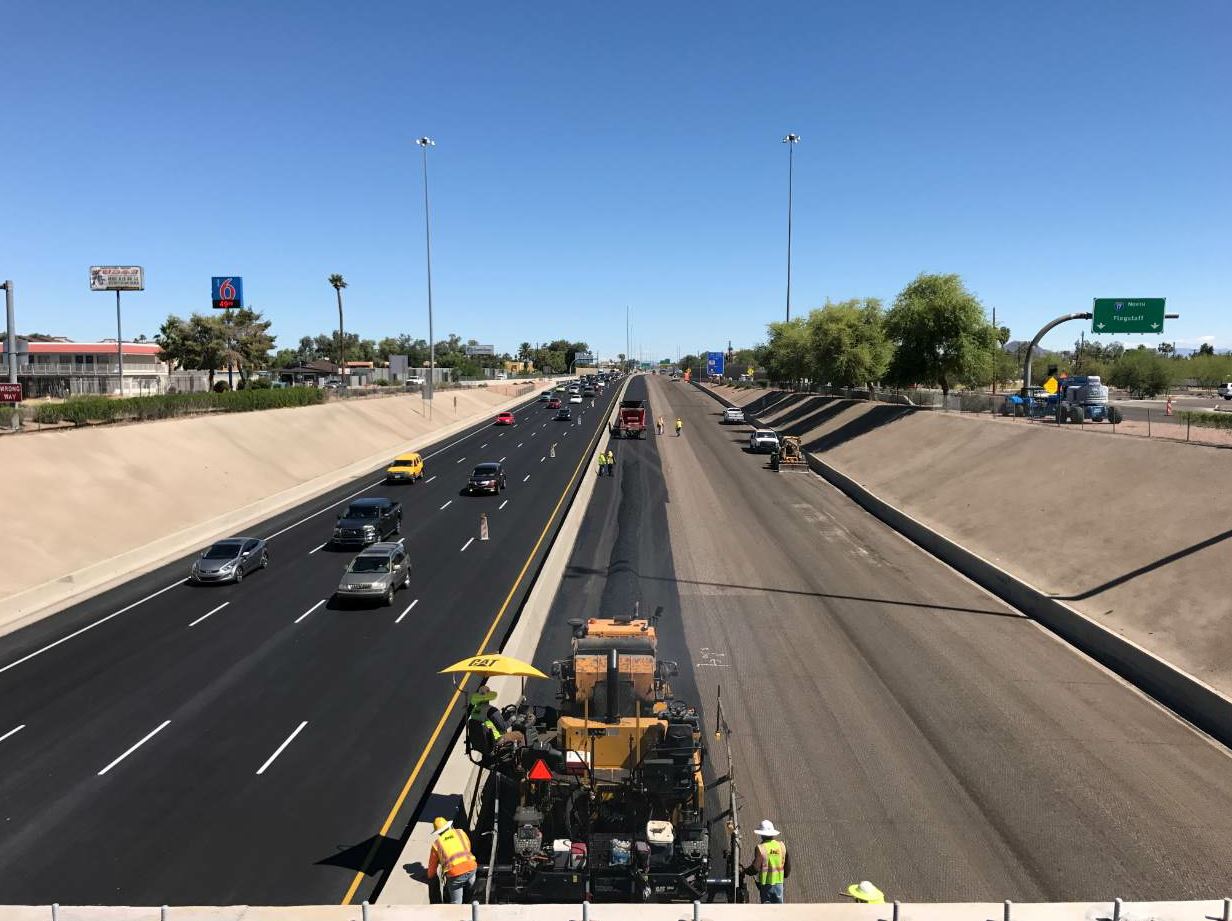
When Sean Bulmann moved from the Midwest to Arizona in 2012, he had to adjust to a whole lot more than just the change in landscape.
As asphalt operations manager for J. Banicki Construction Inc., Phoenix, Arizona, Bulmann faced unfamiliar weather, different mix preferences offering unique challenges, a new approach to traffic management in work zones, and even a totally different approach to infrastructure investment.
“Arizona is very advanced in the way they build things,” Bulmann said. “They don’t just think about today, they think about the future.”
For example, when the Arizona DOT was building the 101 freeway, Bulmann remembers them building an exit ramp for 64th Street, going nowhere.
“But they went ahead and built the bridge because it would be cheaper to build it then than to wait,” Bulmann said. “So when they do want to go north and south off the freeway, that infrastructure is there and they just have to tie it in. You don’t see states doing that very often.”
Despite those adjustments, Bulmann and the Banicki team continued the company’s trend of high-quality asphalt paving the company has been known for since it was established in 1991.
The Story Behind Banicki

Banicki received a Diamond Paving Award from National Asphalt Pavement Association in 2017.
J. Banicki Construction Inc., is a civil construction firm offering aviation, bridges and structures, roads and highways, facilities and utilities construction.
In 2011, the company was purchased by Sterling Construction, which also owns Texas Sterling Construction in Texas, Tealstone Construction in Texas, Road and Highway Builders in Nevada, Myers and Sons Construction in California, and Ralph L. Wadsworth Construction Company in Utah.
Banicki itself has around 100 employees with around 15 of those employees focused exclusively on its asphalt services.
Although the company offers a range of services, asphalt paving accounts for around 30 percent of the company’s business. In 2017, Bulmann estimates Banicki’s crews paved around 120,000 tons of asphalt.
Despite its focus on asphalt paving, Banicki does not produce its own asphalt, instead buying from area producers.
“Arizona is one of the states like that,” Bulmann said. “Back in Chicago, we produced and laid our asphalt, but in Arizona, even big contractors buy from suppliers like Vulcan Materials, Southwest Asphalt and Hanson Aggregates with their plants strategically placed around the valley.”
When the Rubber Hits the Road
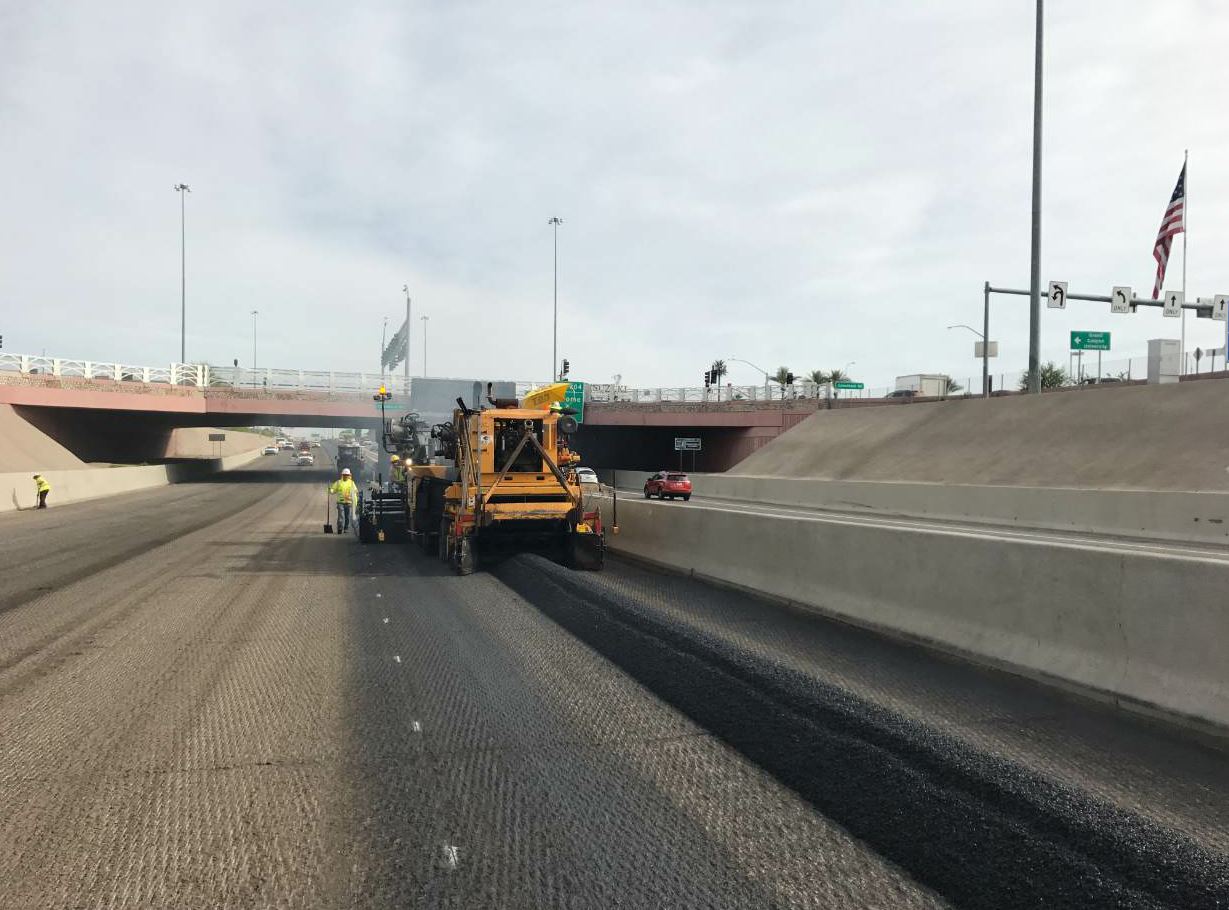
In Arizona, the freeway is often shut down during mill and overlay projects, and the public uses alternative routes instead.
One of the mixes Banicki lays most often is rubberized asphalt. Bulmann estimates that’s what Banicki’s crews are laying around 50 percent of the time.
“Arizona uses a lot of ground tire rubber,” Bulmann said. “They’re actually one of the pioneers of that mix type.”
“It’s also popular in California and Nevada, but we didn’t use it much back in the Midwest,” Bulmann said. “They need a harder surface so snowplows don’t deteriorate the pavement, but warmer climates are more conducive to using the rubber.”
The process involves removing the internal metal belts from tires and turning the rubber into granules about the size of ground coffee. That crumb rubber is then blended with hot asphalt and aggregate to make rubberized asphalt.
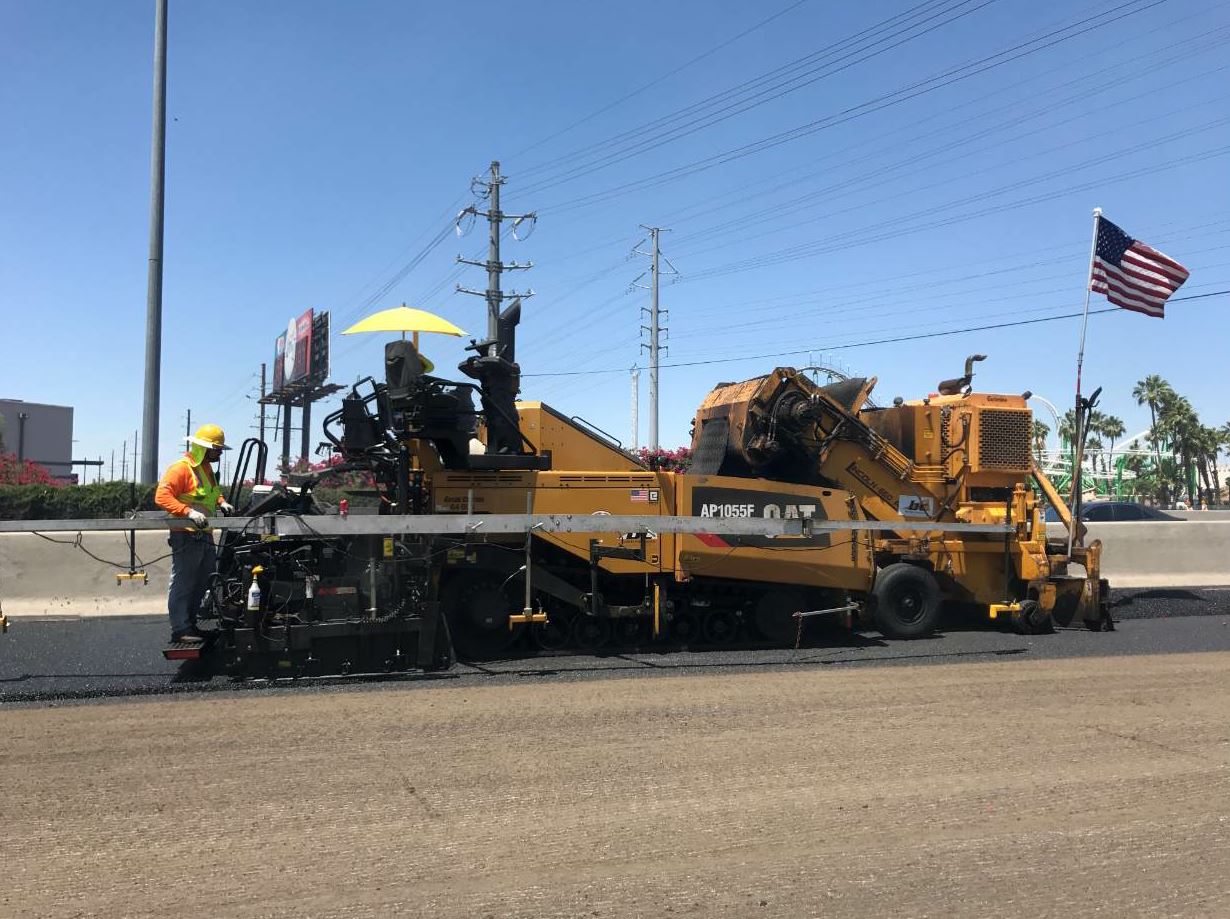
The I-17 project included milling off one inch and paving a one-inch lift of rubberized asphalt for a total of 46,000 tons containing rubber from around 75,000 tires.
“What we like most about rubberized asphalt is its durability,” said Dallas Hammit, ADOT’s state engineer and deputy director for transportation, in a press release. “When our riding surface pavement lasts longer—in some areas, for well over a decade–it’s cost-effective and limits traffic disruptions.”
According to Bulmann, many new construction projects in Arizona will get a full PCCP concrete base and then a wearing course of asphalt rubber and every seven to 10 years the rubberized surface is removed and replaced.
“Rubberized asphalt results in a quieter and smoother paved road and provides a second life for the rubber from worn-out tires that would otherwise be put in landfills,” Bulmann said.
ADOT estimates that the use of rubberized asphalt can reduce traffic noise by approximately four decibels in neighborhoods near urban freeways.

Around 50 percent of the asphalt Banicki lays is rubberized asphalt.
However, working with this type of mix can be difficult, Bulmann said, because it can be very messy.
“The material itself is very tacky,” Bulmann said. “The thick melted rubber makes it hard to work with tools, but our crew has mastered putting it down with a paver and never needing to touch it again.”
He said that it takes paying close attention to the head of material and auger speed so there is no need to shovel material for low spots and work the material by hand, which helps with the smooth ride.
“We just dial it in from the start so the paving crew can just walk along with the paver, watching and checking everything,” Bulmann said. This is made easier, he adds, by the crew’s brand new Cat 1055F paver and its many digital options. “We can slow down the augers and closely control everything so our head of material is always perfect no matter how slow we go.”
To prevent pickup of rubberized asphalt on the roller drums, the roller operators use liquid dish soap in addition to water.
“We give each one of them a 5-gallon jug of liquid dish soap and every time they fill up the roller’s water tank, they add around 2 cups—just enough to start seeing bubbles—and the basic roller movement shakes it up,” Bulmann said.
Using rubberized asphalt also means a bit more cleanup on the paver at the end of the shift, and a bit more release agent.
The biggest thing when paving with rubberized asphalt, Bulmann said, is to never back up. “When you start a pass, you want to make it all the way to the end and you want those passes to be as long as possible,” he said.
An Ideal Project on I-17
This past July, Banicki completed a $10 million project using rubberized asphalt along Interstate 17.
The 10-mile stretch both north and south with four lanes in each direction totaled about 80 lane miles. The project included milling off one inch and paving a one-inch lift of rubberized asphalt for a total of 46,000 tons containing rubber from around 75,000 tires.
Since the crew was using rubberized asphalt, they had to comply with certain weather restrictions.
According to Bulmann, the Arizona DOT specifies that rubberized asphalt must be placed between March 15 and May 31 or between Sept. 1 and Oct. 31. Additionally, the surface temperature has to be at least 85 degrees and rising, but the ambient temperature or forecasted ambient temperature can’t exceed 110 degrees the day before, the day of or the day after paving.
For this particular project, Banicki’s crew started March 17 and was able to continue paving the project through July, when they completed the project, due to an unseasonably mild summer.
However, back in March, the crew was held back a bit because they needed to wait until 10 a.m. for the surface temperature to reach 85 degrees and the sun was setting around 5 p.m. which meant that the work window was extremely limited.

Back in March, the crew was held back a bit because they needed to wait until 10 a.m. for the surface temperature to reach 75 degrees and the sun was setting around 5 p.m., which meant that the work window was extremely limited.
“We had to wait for the sun to come out and heat things up,” Bulmann said. “That meant you have an operation that costs over $4,500 an hour waiting for sunshine. But, as the weather progressed into the summer, we could start a little earlier and pave a little later to make up for that time lost.”
That made the parameters of this project particularly difficult, as the crew was only allowed to work on the project from Friday night until Sunday night, so anything milled off Friday night had to be repaved and ready for traffic by Monday morning.
“The challenge of putting the weekend’s work plan together is that you have to know your temperature window for the day’s production along with your capable tons per hour, both at the plant and with the paver,” Bulmann said. “All of this has to be figured out prior to the milling machines starting on Friday night because around 3 a.m. the area that you have milled will take roughly 3,000 tons of asphalt to replace and is one full day’s paving production.”
Additionally, the way Arizona handles work zone traffic is somewhat unique—or at least for Bulmann and other Midwesterners.
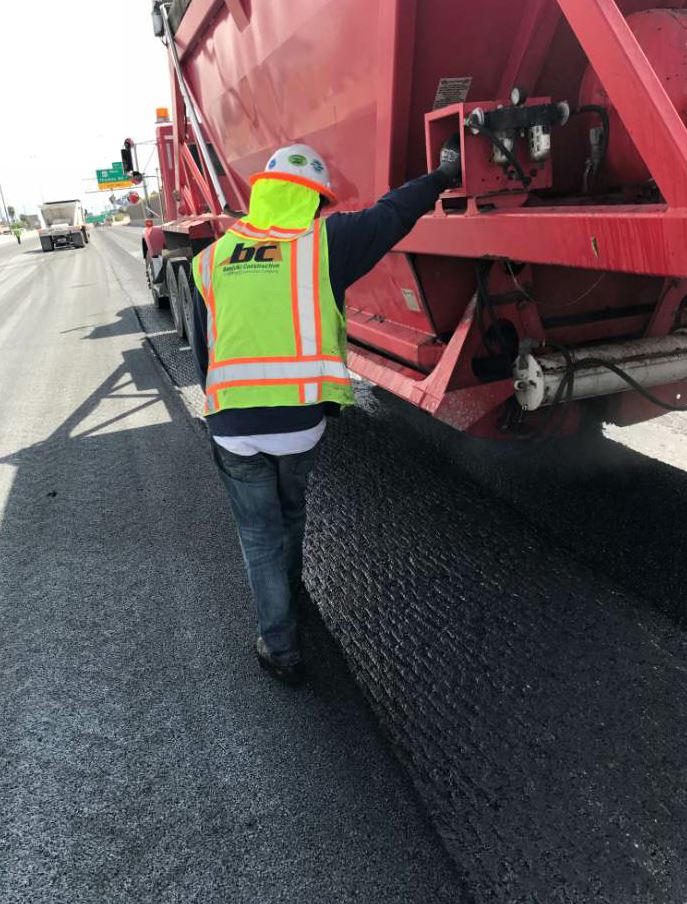
In Arizona, the freeway is often shut down during mill and overlay projects, and the public uses alternative routes instead.
“In the Midwest, we’re usually working alongside traffic,” Bulmann said. “Here they shut the freeway down on a lot of our mill and overlay projects.”
The public is given plenty of notice, Bulmann said, to use alternative routes. “Although it has its benefits, this method poses its own challenges,” he adds. “If everywhere around the job is gridlock traffic, how do you get your haul trucks in and out? You can’t.”
Even though not working alongside traffic keeps workers safer, it isn’t uncommon for impatient or confused drivers to attempt to enter and drive through the work zone. On this job alone, that happened three times, Bulmann said.
To prevent this and to help direct haul truck traffic into the work zone, Banicki works closely with the Highway Patrol to have a handful of uniformed officers on site.
From the Road to the Air
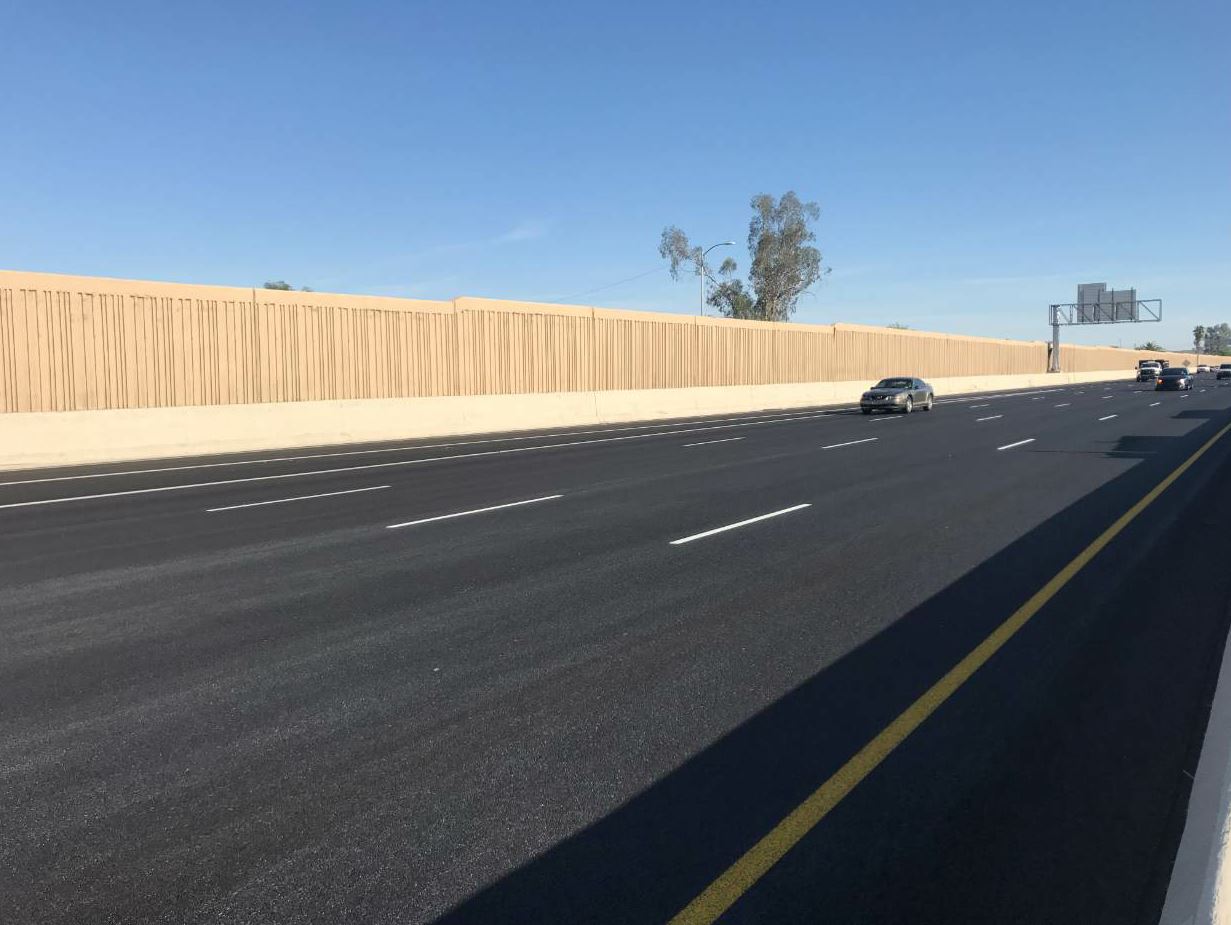
The I-17 project included a 10-mile stretch both north and south with four lanes in each direction for a total of about 80 lane miles.
In addition to roadway paving, Banicki also does a lot of airport work. That includes asphalt paving, but also other civil construction.
They’ve done work for Phoenix Sky Harbor International Airport (PHX), Los Angeles International Airport (LAX), Scottsdale Airport (SDL), Deer Valley Airport (DVT), and Flagstaff Pulliam Airport (FLG), among many others,
In total, Banicki has worked on around 90 different aviation projects at 19 airports across the United States, with a total project value of more than $200 million.
Included among those projects are the asphalt runways the Banicki crew paved at Deer Valley Airport and other smaller airports.
“The municipalities and DOTs we work with have between a ¼ and ⅛-inch tolerance in thickness, but airports have tighter tolerance,” Bulmann said. “They have to be dialed in perfectly and you have to have good people who know what they’re doing, are trained properly and can pave quality pavements.”
“The only way we can make sure the people on the ground know what’s at stake is through proper training,” Bulmann said. “The paving crew needs to know that when they walk away from the job at the end of the day that they’re leaving behind a perfect mat.”
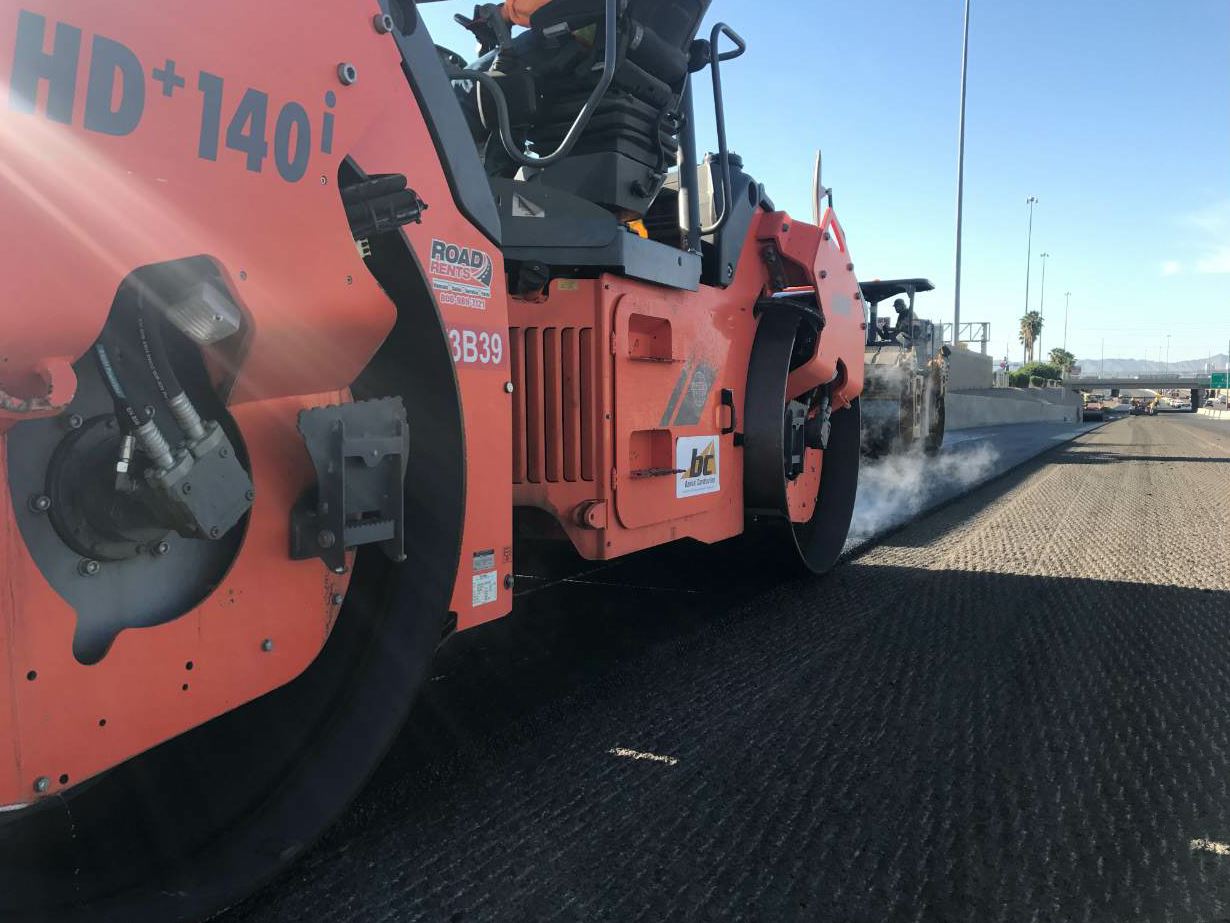 Banicki is no stranger to quality. Just this year, Banicki received a Diamond Paving Commendation from National Asphalt Pavement Association.
Banicki is no stranger to quality. Just this year, Banicki received a Diamond Paving Commendation from National Asphalt Pavement Association.
“It’s just a nice feather in the cap to be certified as a good paver,” Bulmann said. Part of receiving that award was making sure Banicki’s training program was up to snuff.
“We’re very big into training and making sure people are recognized for their hard work,” Bulmann said. Banicki trains on the job and in the classroom, with the 4-hour classroom portion occurring twice a year. “The classroom portion breaks things down to the basics.”
“Our motto is that everyone should know how to do everyone else’s job, so the laborer can rake, the screed operator can run the paver, and vice versa,” Bulmann said. “Quality training and a focus on perfecting what we do best is just a part of our company’s history.”
